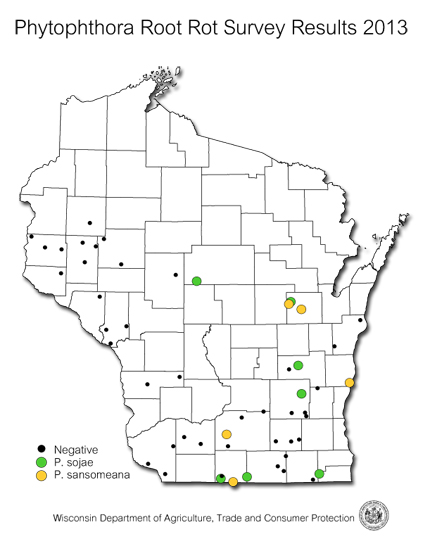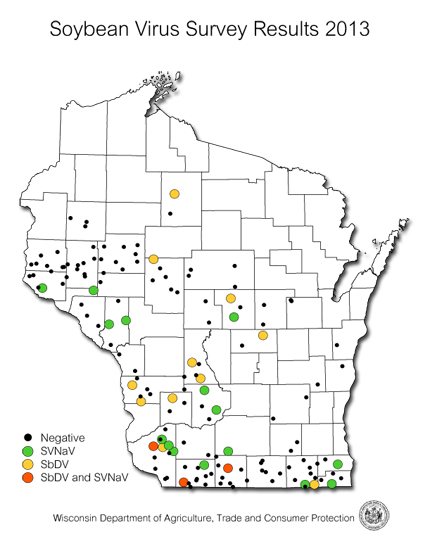SOYBEAN APHID - Densities during the second half of the annual survey were the highest in five years. Examination of 139 soybean fields, once in July and again in August, found a state average of 18 aphids per plant during the July survey and a substantially higher count of 55 per plant in August. For comparison, state average densities from 2010-2012 were extremely low at 7-16 aphids per plant and the state average in 2008 was 72 per plant. Approximately 6% of sites sampled from August 6-28 contained economic populations of 250-587 per plant, 22% of fields had moderate averages of 50-249 per plant, and 72% had counts of less than 49 per plant. Populations in 30% of fields decreased from July to August, suggesting that about one-third of the survey sites may have been treated for aphid control this season. This insect was the most economically important insect pest affecting soybeans in 2013, with populations reaching the highest levels since 2008.
-- Krista Hamilton, DATCP Entomologist
PHYTOPHTHORA ROOT ROT - DATCP plant pathologists surveyed soybean fields for root rot diseases from June 17-July 18. Of the 52 fields sampled, seven (13%) tested positive for Phytophthora sojae, a common cause of soybean root and stem rot in Wisconsin. A second, newly described Phytophthora species, Phytophthora sansomeana, was identified from five samples (10%). Four of the P. sansomeana finds were from soybean fields randomly selected for survey. One detection, on corn plants, was from a field which tested positive in 2012 and was resampled in 2013. Corn is also reported to be a host of P. sansomeana.
Phytophthora sansomeana was detected for the first time in Wisconsin soybeans last year in Jefferson, Marathon and Sheboygan counties and was found this summer in Dane, Green, Outagamie and Sheboygan counties.
SOYBEAN VIRUSES - One hundred and fifty-one soybean fields were sampled and tested for soybean dwarf virus (SbDV), soybean vein necrosis-associated virus (SVNaV) and alfalfa mosaic virus (AMV) this season. Nine percent of fields tested were infected with SbDV in 2013, comparable to the 10% infection rate in 2012. Alfalfa mosaic virus was found in 5% of tested fields, an increase from 2% the year before. Soybean vein necrosis-associated virus, a tospovirus first detected in Wisconsin last season, was found in 12% of samples.
-- Anette Phibbs, DATCP Plant Pathologist



Source : wisconsin.gov